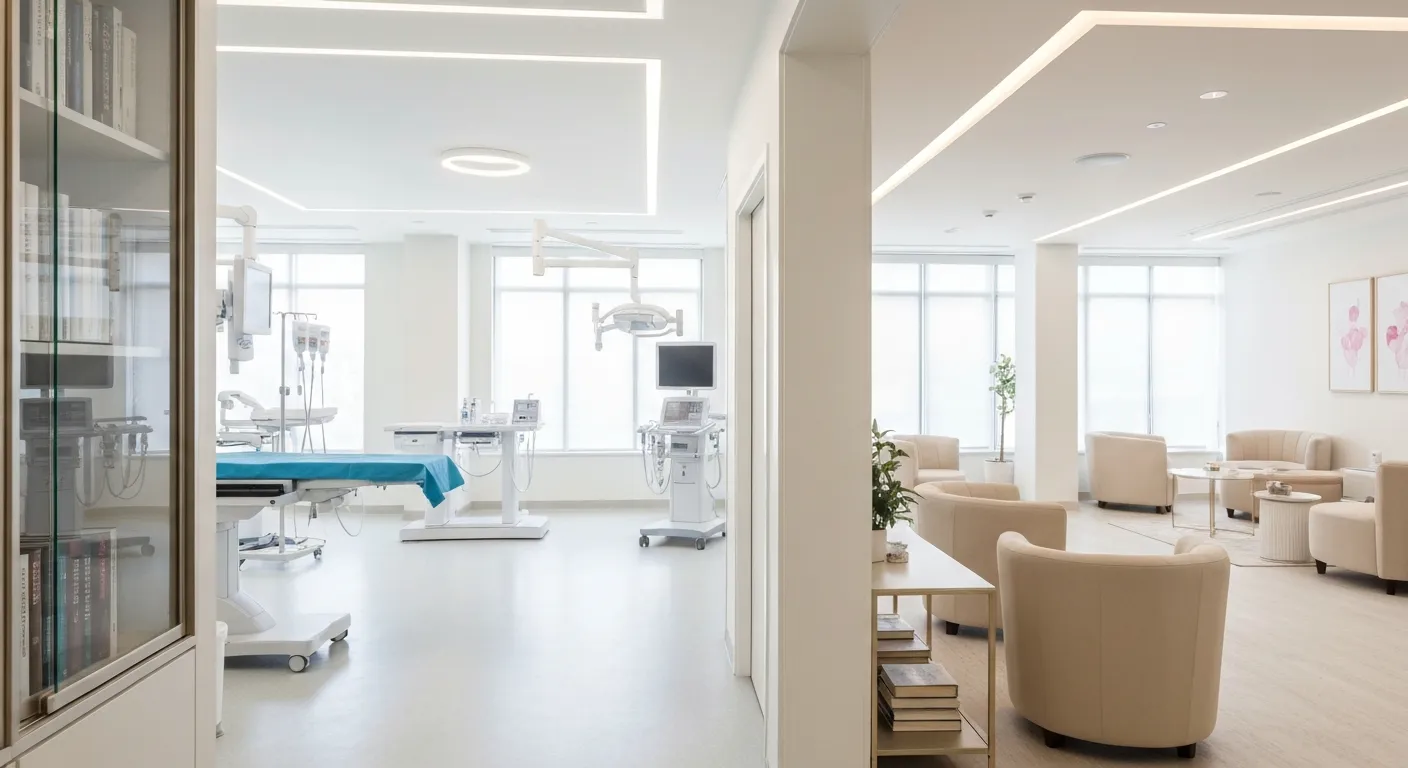Comprehensive Insights into Managing Endometriosis: From Self-Care to Advanced Treatments

Understanding Endometriosis and Its Impact
Endometriosis is a chronic and often debilitating condition affecting millions worldwide, yet it remains underdiagnosed and frequently misunderstood. Characterized by the growth of endometrial-like tissue outside the uterus, it causes persistent pelvic pain, infertility, and a complex spectrum of symptoms that severely affect quality of life. This article explores practical approaches for managing the pain and symptoms of endometriosis, grounded in current clinical insights and evidence-based treatments, to help patients and caregivers navigate this challenging disorder effectively.
Defining Endometriosis: Causes and Pathophysiology

What is endometriosis and what are its common causes?
Endometriosis is a chronic, often painful condition where tissue similar to the uterine lining, known as endometrial tissue, grows outside the uterus. This ectopic tissue commonly appears on the ovaries, peritoneum, fallopian tubes, and other pelvic structures. Because this tissue responds to hormonal changes, it can thicken, break down, and cause bleeding during menstrual cycles, which results in inflammation, pain, and sometimes scar tissue formation.
The exact reasons why endometriosis develops remain unclear, but several theories and factors are believed to contribute. The most widely accepted explanation is retrograde menstruation, where menstrual blood containing endometrial cells flows backward through the fallopian tubes into the pelvic cavity instead of leaving the body. However, since retrograde flow occurs in many women who do not develop endometriosis, additional factors must influence disease development.
Another significant theory is coelomic metaplasia. This suggests that peritoneal cells, which line the abdominal cavity, transform into endometrial-like tissue under certain stimuli, such as hormonal or environmental influences. This transformation allows ectopic growth in areas beyond the pelvis.
Various genetic, hormonal, immune, and environmental factors also play roles in the disease.
Common sites of ectopic endometrial tissue
Endometrial tissue outside the uterus can occur in several locations, most frequently:
| Site | Description | Associated Symptoms | |------------------------------|--------------------------------------------------------------|--------------------------------------| | Ovaries | Formation of endometriomas or |
Recognizing Symptoms and Diagnostic Pathways

What are the typical symptoms of endometriosis and how is it diagnosed?
Women with endometriosis often experience a range of symptoms that can significantly impact their quality of life. The most common signs include severe pelvic pain, particularly during menstruation (dysmenorrhea), pain during sexual intercourse (dyspareunia), and discomfort during bowel movements or urination. Heavy menstrual bleeding and infertility are also frequently reported.
In addition to these, some may experience fatigue, nausea, bloating, diarrhea, or constipation. In rare instances, endometrial tissue can involve other organs like the lungs or diaphragm, leading to atypical symptoms.
Diagnosis starts with a detailed clinical evaluation, including a thorough review of symptoms and medical history. A physical pelvic exam may reveal tender areas or nodules. Imaging tests, such as transvaginal ultrasound or MRI, are useful tools to detect cystic endometriomas or deep infiltrating lesions. However, these modalities can suggest but not definitively confirm endometriosis.
The gold standard for diagnosis remains surgical exploration through laparoscopy. This minimally invasive procedure allows direct visualization of endometrial lesions, nodules, or adhesions. During laparoscopy, tissue samples can be obtained for biopsy to confirm the diagnosis microscopically.
Early and accurate diagnosis is essential, as it guides targeted treatment strategies to alleviate symptoms, improve fertility, and enhance overall well-being. Despite the challenges in diagnosis, a multidisciplinary approach ensures optimal management tailored to each patient’s needs.
Complex Pain Mechanisms in Endometriosis
What are the current clinical insights on the mechanisms underlying endometriosis symptoms to improve management?
Understanding the pain associated with endometriosis involves exploring various interconnected mechanisms. Pain types include nociceptive pain, which arises from tissue injury or inflammation; neuropathic pain, resulting from nerve damage or dysfunction; muscular pain related to pelvic muscle tension; and nociplastic pain, characterized by altered pain processing in the central nervous system.
Central sensitization plays a critical role, where the nervous system becomes more responsive to pain signals, leading to heightened pain perception even without ongoing tissue inflammation. This process explains atypical, cyclic, and acyclic symptoms often experienced by patients.
Inflammation, a hallmark of endometriosis, fuels pain through cytokines like IL-6, TNF-α, and vascular endothelial growth factor (VEGF). These inflammatory mediators promote neuroangiogenesis—the formation of new nerve and blood vessels—which amplifies pain signaling and lesion growth.
Hormonal factors, particularly elevated local estrogen production via increased aromatase activity and resistance to progesterone, sustain endometrial tissue proliferation and inflammatory responses. These hormonal imbalances contribute to nerve sensitization and persistent pain.
Furthermore, immune dysfunction, including impaired clearance of ectopic endometrial cells and decreased natural killer cell activity, permits the survival of aberrant tissue and perpetuates inflammation.
Chronic pain also impacts the nervous system beyond local tissues, inducing alterations such as enhanced nerve growth and changes in pain pathways within the brain. These central changes can worsen pain perception and complicate management.
Altogether, these insights emphasize the multifaceted nature of endometriosis pain, guiding the development of targeted treatments that go beyond symptom relief to modulate underlying inflammatory and neurological pathways.
Medical Treatments: Hormonal Therapies and Analgesics
What are the most effective medical treatments available for symptom management of endometriosis?
Managing endometriosis symptoms typically involves hormonal therapies and pain medications. The most effective options include combined oral contraceptives (COCs), progestins, GnRH agonists, and newer GnRH antagonists.
Hormonal treatments work primarily by suppressing estrogen production, which decreases the growth and activity of endometrial tissue outside the uterus. COCs and progestins are widely used as first-line therapies because they inhibit ovulation and reduce menstrual bleeding, leading to significant pain relief. Continuous use of these hormonal agents often provides better control over pain symptoms.
GnRH agonists are highly effective, inducing a hypoestrogenic state that reduces lesion activity drastically. However, their use is limited in duration due to side effects like hot flashes and decreased bone density. To counteract these side effects, add-back therapies are sometimes employed.
More recent development includes GnRH antagonists, such as elagolix, which offer effective symptom relief with fewer adverse effects and shorter treatment durations.
Despite their benefits, these therapies are not permanent solutions. Many women experience symptom return after stopping treatment, which underscores the importance of personalized, long-term management plans. Treatment continuation and adjustments depend on tolerability, symptom severity, cost, and patient preferences.
In addition to hormonal treatments, pain control with NSAIDs, such as ibuprofen or naproxen, helps manage acute pain episodes. Using NSAIDs early and regularly during pain flares can significantly reduce inflammation.
Overall, optimal management combines symptom relief with minimizing side effects, often requiring an individualized approach tailored to each woman's condition and response to therapy.
| Treatment Type | Mechanism of Action | Common Agents | Typical Side Effects | Duration Considerations |
|---|---|---|---|---|
| Combined oral contraceptives | Inhibit ovulation, reduce menstrual flow | Ethinylestradiol + progestin | Irregular bleeding, mood changes | Usually up to 6-12 months before reevaluation |
| Progestins | Reduce endometrial tissue growth | Norethindrone, medroxyprogesterone | Weight gain, mood swings, irregular bleeding | Can be used long-term, with monitoring |
| GnRH agonists and antagonists | Suppress ovarian hormone production | Leuprolide, elagolix | Hot flashes, decreased bone density | Limited to 6 months or as prescribed |
How do hormonal suppression strategies help prevent lesion progression?
Hormonal suppression aims to decrease estrogen levels, which are crucial for the growth and maintenance of endometriotic lesions. By reducing estrogen, these therapies slow down or halt lesion proliferation, thereby alleviating pain and potentially preventing further tissue invasion. This approach not only provides symptomatic relief but also minimizes the progression of the disease. Continuous hormonal suppression is particularly beneficial for patients with active, growing lesions, especially when conservative measures fail. Nonetheless, long-term suppression requires careful management to mitigate side effects associated with hypoestrogenism, including bone density loss and menopausal symptoms.
For comprehensive disease control, combining hormonal therapy with other treatments such as physiotherapy, dietary modifications, or surgical intervention may offer improved outcomes. The goal remains to tailor therapy to each patient's disease severity, response, and life plan, ensuring sustainable symptom management and quality of life.
Surgical Interventions: Indications and Outcomes
Laparoscopy as diagnostic and therapeutic tool
Laparoscopy is considered the gold standard for diagnosing endometriosis, allowing direct visualization of ectopic tissue and the opportunity to treat lesions during the procedure. It is minimally invasive, leading to shorter recovery times.
Excision versus ablation techniques
During laparoscopy, excision involves removing endometriotic tissue entirely, including some surrounding tissue, which is associated with more sustained pain relief. Ablation, or cauterization, destroys visible lesions but may leave behind microscopic endometrial tissue, possibly leading to higher recurrence rates. Most experts favor excision for better long-term outcomes.
Presacral neurectomy for midline pelvic pain
In cases where pain is concentrated in the midline pelvis, presacral neurectomy (removal of nerve fibers) may significantly reduce severe, persistent pain. Efficacy rates can reach as high as 87%, but this procedure carries risks like bowel or bladder dysfunction, making careful patient selection essential.
Hysterectomy as a last resort
Hysterectomy, often combined with oophorectomy, is reserved for women with severe, unmanageable pain who have completed childbearing. It may substantially alleviate symptoms but involves higher surgical risks and induces menopause, which requires hormonal replacement therapy.
Post-surgical hormonal therapy for recurrence prevention
After surgery, hormonal treatments such as GnRH analogs or oral contraceptives are recommended to suppress ovarian activity, decreasing the chance of disease recurrence. Long-term hormonal suppression enhances pain relief and improves quality of life.
Impact on fertility and quality of life
Surgical removal of endometriotic lesions can improve fertility prospects, with pregnancy rates increasing by about 30-50%. Additionally, effective surgical intervention reduces pain, significantly enhancing patients' daily functioning and overall well-being.
| Surgical Method | Main Purpose | Benefits | Risks and Considerations |
|---|---|---|---|
| Laparoscopy (diagnostic & therapeutic) | Visualize & treat lesions | Minimally invasive, high success | Bleeding, infection, possible recurrence |
| Excision | Remove endometrial tissue | Better long-term pain relief | Surgical complexity, skill-dependent |
| Ablation | Destroy lesions | Shorter procedure | Higher recurrence, less durable |
| Presacral Neurectomy | Reduce midline pain | High efficacy for severe pain | Bowel/bladder dysfunction risks |
| Hysterectomy | Last-resort pain relief | Significant symptom reduction | Menopause induction, surgical risks |
Harnessing these surgical options with personalized planning and multidisciplinary input can offer substantial benefits, especially when combined with medical therapy to prevent recurrence. Ongoing assessment and patient preferences should guide the choice of intervention.
Complementary and Alternative Therapies for Symptom Relief
Acupuncture efficacy and application
Acupuncture is a widely used complementary treatment for endometriosis-related pain. It involves inserting small needles at specific body points to help reduce discomfort. Some studies suggest that acupuncture can significantly lower pain severity, possibly working by increasing blood flow and modulating nerve signals. Although evidence varies, many patients report improved quality of life and relief from chronic pelvic pain through regular sessions.
Pelvic floor physiotherapy and osteopathy
Pelvic floor physiotherapy focuses on relaxing tight pelvic muscles that often contribute to pain. Techniques like manual therapy, exercises, and biofeedback are used to reduce muscle tension and alleviate myofascial pain. Osteopathy, which addresses musculoskeletal imbalances, can also help improve pelvic alignment and decrease pressure on affected tissues. These therapies are especially beneficial when pelvic muscle tightness exacerbates endometriosis pain.
Herbal remedies like curcumin, resveratrol, turmeric
Herbal remedies such as curcumin (found in turmeric) and resveratrol (a plant compound) are gaining attention for their anti-inflammatory properties. Curcumin has been shown to reduce inflammation markers and help manage pain, but high-quality clinical trials are limited. Resveratrol reportedly decreases inflammatory responses as well. While these supplements are generally safe, monitoring for side effects and discussing their use with healthcare providers is essential.
Heat therapy and progressive muscle relaxation
Applying heat through heating pads or hot baths is a simple, effective method to soothe pelvic and abdominal muscles. Heat relaxes tense muscles, easing pain episodes. Additionally, progressive muscle relaxation exercises help control stress and nervous system arousal that can worsen pain perception. Regular practice of relaxation techniques can improve overall well-being and reduce pain flare-ups.
Limited evidence and safety considerations
Though many complementary therapies show promise, most lack high-quality evidence to support routine use in endometriosis management. Some treatments may have side effects or contraindications. For instance, herbal remedies can interact with medications, and intense physical therapies might cause discomfort if not properly supervised. Patients should always consult healthcare professionals before starting any new complementary regimen to ensure safety and appropriateness.
Lifestyle Modifications to Support Symptom Management
What lifestyle adjustments and dietary changes are recommended to help manage endometriosis symptoms?
Managing endometriosis involves more than medical interventions; lifestyle and diet play a crucial role. A balanced, anti-inflammatory diet can significantly reduce symptoms and improve quality of life.
Foods rich in anti-inflammatory properties include plenty of fruits, vegetables, oily fish such as salmon, mackerel, and sardines, as well as nuts and olive oil. These foods contain omega-3 fatty acids, antioxidants, and vitamin D, which help modulate inflammation and hormonal imbalances linked to endometriosis.
Conversely, it is advisable to limit or avoid processed foods, trans fats, red meats, caffeine, and alcohol. These substances can increase inflammation and may exacerbate pain symptoms. Increasing fiber intake through whole grains, legumes, and ground flaxseed also supports the reduction of circulating estrogen levels, potentially alleviating symptoms.
In addition to dietary modifications, regular physical activity such as yoga, Pilates, or aerobic exercises can help decrease pain and improve overall mobility. Stress management techniques—like mindfulness, meditation, and deep breathing exercises—are essential, given the link between chronic pain, stress, and inflammation.
Getting sufficient sleep is vital for immune function and pain control. Sleeping well helps lower stress hormones and supports the body's natural repair processes.
Ultimately, personalized approaches and consultation with healthcare professionals or dietitians can optimize these strategies, considering individual dietary triggers and health status.
For further insights: Search terms like “diet and lifestyle management in endometriosis” provide extensive resources on integrating these modifications into daily life.
Psychological Support and Pain Education

How does chronic pain in endometriosis affect mental health?
Women with endometriosis often experience high levels of stress, depression, and anxiety due to persistent pain and its impact on daily life. Chronic pain, especially when unrelieved by treatment, can lead to feelings of helplessness and social isolation, affecting overall emotional well-being.
What role do cognitive behavioral therapy and mindfulness play?
Psychological interventions like cognitive behavioral therapy (CBT) help women manage pain perception and develop coping skills. Mindfulness-based stress reduction (MBSR) techniques encourage focus on the present, reducing stress and emotional distress. These approaches can improve mental health, lessen the experience of pain, and enhance quality of life.
How can managing depression and anxiety improve outcomes?
Addressing emotional health through counseling, support groups, and, if needed, medication, can significantly reduce emotional suffering. Support networks provide a platform to share experiences, learn coping strategies, and decrease feelings of loneliness associated with chronic illness.
What are the benefits of patient education and support groups?
Educating women about endometriosis and its symptoms empowers them to participate actively in their treatment plan. Support groups offer peer understanding and practical advice, which can improve adherence to therapy and patient satisfaction.
Which stress management strategies are effective?
Practices such as gentle exercise (yoga, walking), relaxation techniques, diaphragmatic breathing, and engaging in hobbies promote mental calmness. These help reduce the feedback loop of stress and pain, creating a more balanced approach to managing symptoms.
| Approach | Focus | Benefits | Resources |
|---|---|---|---|
| Cognitive Behavioral Therapy | Emotional coping | Reduces pain perception, improves mood | Licensed therapist, online programs |
| Mindfulness & MBSR | Stress reduction | Fosters acceptance, decreases anxiety | Meditation apps, local classes |
| Support Groups | Peer support | Enhances understanding, reduces isolation | Local clinics, online forums |
| Stress Reduction Techniques | Relaxation | Low-cost, accessible, easy to implement | Guided meditations, breathing exercises |
Personalized, multimodal strategies—combining medical, psychological, and lifestyle approaches—are most effective in managing endometriosis-related pain and improving overall quality of life.
Multimodal and Individualized Treatment Plans

How can multimodal, evidence-based methods be utilized to provide symptom relief in endometriosis?
Managing endometriosis effectively often requires a comprehensive and personalized approach. Multimodal treatment combines various strategies—medical, surgical, and holistic—to address the complex pain mechanisms associated with this condition.
Initially, hormonal therapies such as combined oral contraceptives, progestins, and GnRH analogs are employed to suppress ovarian hormone production and reduce endometrial tissue activity. When pain persists, surgical options like laparoscopy to excise or ablate endometrial lesions can be considered. These interventions are often complemented by non-medical methods designed to improve quality of life.
Recent evidence suggests that dietary modifications—like adopting an anti-inflammatory diet rich in fruits, vegetables, omega-3 fatty acids, and antioxidants such as vitamins C and E—may help lessen pain symptoms. Physiotherapy, including pelvic floor physical therapy and osteopathy, can alleviate musculoskeletal pain, while heat therapy, through heating pads or warm baths, provides immediate pain relief.
Psychological support, including mindfulness, cognitive-behavioral therapy (CBT), and stress reduction techniques, play crucial roles in managing the emotional impact of chronic pain. Additionally, complementary therapies such as acupuncture have shown promising results in reducing pain severity.
This integrative approach benefits from the support of multidisciplinary teams—comprising gynecologists, pain specialists, physiotherapists, dietitians, and mental health professionals. They collaborate to tailor treatment plans based on individual needs, disease severity, and patient preferences.
Ongoing research underscores the importance of early diagnosis and continuous management. Regular monitoring allows for adjustments to treatment strategies, minimizing side effects and enhancing symptom control.
In summary, combining evidence-based hormonal treatments, minimally invasive surgeries, lifestyle changes, dietary adjustments, physical therapy, and psychological support forms a powerful, patient-centered approach. This multimodal methodology aims to not only reduce pain but also improve overall wellbeing and quality of life for women with endometriosis.
Challenges and Limitations in Current Treatments

High recurrence rates and symptom persistence
Endometriosis poses significant treatment challenges due to its high chance of recurrence. Even after surgical removal of endometrial tissue, many women experience a return of symptoms, often within a few years. Similarly, hormonal therapies may offer temporary relief, but symptoms frequently persist or recur once treatment stops.
Limitations of repeated surgery and hormonal options
Repeated surgeries are sometimes necessary when pain continues despite initial procedures. However, their long-term effectiveness depends on factors such as the extent of disease and surgical technique. Additionally, repeated surgeries carry risks of scar tissue formation and complications. Hormonal treatments like birth control pills, GnRH analogs, and progestins are mainstays of management, but they have limitations such as side effects and inability to provide sustained relief in all cases.
Side effects and tolerability concerns
Many hormonal therapies induce menopausal-like symptoms, including hot flashes, mood changes, and bone density loss, which can limit their use. Over-the-counter pain medications like NSAIDs may cause gastrointestinal issues if used long-term. These side effects impact patient quality of life and adherence to treatment plans.
Need for long-term management and follow-up
Given the chronic and recurrent nature of endometriosis, ongoing management is essential. A personalized, multimodal approach involving medical, surgical, and supportive therapies offers better outcomes. Regular follow-up helps monitor disease progression, manage side effects, and adapt treatments as needed.
Areas for future research and therapeutic development
Innovative therapies are needed to overcome current limitations. Future research focuses on understanding pain mechanisms, developing targeted drugs with fewer side effects, and exploring regenerative or immune-modulating treatments. Advances in minimally invasive surgeries and personalized medicine may eventually improve long-term outcomes, reducing recurrence and improving quality of life for women with endometriosis.
Severe and Refractory Cases: Inpatient and Specialized Therapies
When is inpatient multimodal pain therapy considered for endometriosis?
In cases where pain persists despite comprehensive outpatient treatments, inpatient multimodal pain therapy may be recommended. Criteria include severe, ongoing pain that significantly impairs daily functioning, failure of prior medical and surgical interventions, and the presence of complex pain mechanisms such as central sensitization. Typically, these cases involve a multidisciplinary team to customize an intensive treatment plan.
How do physiotherapy and psychological interventions help?
Physiotherapy, including pelvic floor physical therapy, aims to relax tense muscles and reduce musculoskeletal pain related to endometriosis. Techniques like osteopathy and acupuncture can also alleviate pelvic discomfort. Psychological support, especially therapies like cognitive-behavioral therapy (CBT) and mindfulness-based stress reduction (MBSR), help women cope with chronic pain, combat depression and anxiety, and improve overall well-being.
What advanced pain management methods are used?
In challenging cases, advanced methods such as transcutaneous neurostimulation and nerve blocks may be employed to target pain pathways more directly. In some centers, intrathecal drug delivery systems or spinal cord stimulation are considered for severe, refractory pain. These approaches aim to modulate pain signals and provide relief where traditional medications are ineffective.
How can quality of life be improved in difficult cases?
Ultimately, the goal of inpatient therapy is to enhance quality of life by reducing pain severity, restoring daily function, and supporting mental health. Combining pharmacological, physical, and psychological treatments within a structured inpatient setting offers a comprehensive approach, helping women regain control and reduce suffering associated with severe endometriosis-related pain.
Towards Effective and Holistic Endometriosis Management
Managing the pain and symptoms of endometriosis requires a nuanced understanding of the disease’s complex biology, diverse symptomatology, and individual patient needs. Through early diagnosis and a thoughtful combination of medical, surgical, lifestyle, and complementary approaches, patients can achieve meaningful symptom relief and improved quality of life. Emphasizing multidisciplinary care, patient education, and psychological support complements symptom-targeted therapies to address the multifaceted challenges posed by this chronic condition. Ongoing research and personalized treatment plans remain crucial as we work towards more effective, long-term solutions for endometriosis sufferers worldwide.
References
- Endometriosis, an Ongoing Pain—Step-by-Step Treatment
- Pain Management Strategies for Endometriosis
- Treating the pain of endometriosis
- Management of Endometriosis-Related Pain: Comparing ...
- Managing Endometriosis Pain: Practical Tips
- Managing Endometriosis Pain: Effective Strategies
- Optimal Management of Endometriosis and Pain
- Evaluation and Treatment of Endometriosis
- Care and treatment of endometriosis pain
- Treatment of endometriosis: a review with comparison of 8 ...





.png)